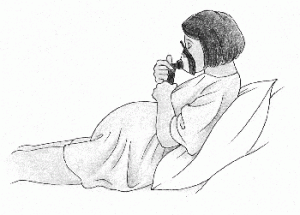 Every year there are roughly 137 million births globally. Of these, about 10% may result in serious complications. Tragically, approximately 5.6 million babies are stillborn or pass away soon after, and around 260,000 women pass away every year in childbirth. These situations often occur in underdeveloped countries or rural areas where women do not have access to hospitals or procedures such as a cesarean section when undergoing an obstructed or prolonged labor. Currently, when situations like this arise, options to extract the baby include using forceps or a vacuum extractor, which can twist the baby’s spine, crush its head, or cause hemorrhaging. Despite these statistics and outdated technologies, there has been little to no technological advancement in this area for years.
Every year there are roughly 137 million births globally. Of these, about 10% may result in serious complications. Tragically, approximately 5.6 million babies are stillborn or pass away soon after, and around 260,000 women pass away every year in childbirth. These situations often occur in underdeveloped countries or rural areas where women do not have access to hospitals or procedures such as a cesarean section when undergoing an obstructed or prolonged labor. Currently, when situations like this arise, options to extract the baby include using forceps or a vacuum extractor, which can twist the baby’s spine, crush its head, or cause hemorrhaging. Despite these statistics and outdated technologies, there has been little to no technological advancement in this area for years.
However, Jorge Odón, a car mechanic from Argentina, recently came up with an idea for a new type of low cost device to help extract a baby from the birth canal. It consists of a plastic bag inside of a plastic sleeve. The bag is placed gently around the baby’s head and then inflated to grip it. When the sleeve is pulled, the baby emerges with it. This device is likely safer than using forceps or a vacuum extractor to assist in a difficult labor, and as there is less contact between the baby’s head and the birth canal, the risk of passing an infection such as HIV from mother to child may be diminished.
This birthing assistance device, known as the Odón Device, has been endorsed by the World Health Organization, which plans to increase testing from 30 Argentine women to 100 more women in China, India and South Africa to further determine its effectiveness and safety. The device has also received grants from donors, and has been licensed for production by an American company. If additional tests verify the claims that some doctors are making - that the device is safe to be used by midwives with minimal training - then the device may see clinical use in two to three years.
For more information on the Odón device, visit the WHO website here.
Sources:

 On Tuesday, December 18th the
On Tuesday, December 18th the  The following blog was posted on the
The following blog was posted on the